Complete Guide to Finding LCM in Python: 4 Methods with Examples and Interactive Quiz
Master Python LCM calculation with proven methods, expert tips, and interactive examples perfect for competitive programming
Table of Contents
- 1. Introduction
- 2. What is LCM in Programming and Mathematics?
- 3. Why Learn to Find LCM Using Python?
- 4. Python Program to Find LCM Using While Loop
- 5. Shortcut Method: Using math.lcm() in Python 3.9+
- 6. Using GCD to Find LCM (Compatible with All Versions)
- 7. Efficient Way to Find LCM of Multiple Numbers
- 8. Interactive LCM Calculator
- 9. Test Your Knowledge: Interactive Quiz
- 10. Common Mistakes and Quick Fixes
- 11. Interview Tips and Coding Tricks
- 12. Latest Shortcut Methods and Expert Tricks
- 13. Frequently Asked Questions
- 14. External Resources
Introduction
Why Learn LCM in Python Programming?
Learning LCM (Least Common Multiple) in Python is essential for competitive programming, algorithm design, and solving real-world synchronization problems. This comprehensive guide covers all methods from basic to advanced.
Finding the Least Common Multiple (LCM) is a fundamental mathematical operation that every Python programmer should master. Whether you’re preparing for coding interviews, competitive programming contests, or building real-world applications, understanding LCM calculation methods will give you a significant advantage.
In this comprehensive tutorial, we’ll explore four different methods to calculate LCM in Python, each with its own benefits and use cases. You’ll also get hands-on practice with our interactive calculator and test your knowledge with a challenging quiz.
What You’ll Learn:
- 4 proven methods to calculate LCM in Python
- When to use each method for optimal performance
- Real-world applications and use cases
- Common mistakes and how to avoid them
- Latest shortcuts and expert tricks for 2025
- Interactive examples and hands-on practice
What is LCM in Programming and Mathematics?
Definition of LCM
Simple Definition
The Least Common Multiple (LCM) is the smallest positive number that can be divided by two or more numbers without leaving a remainder.
Basic LCM Examples
| Numbers | Multiples | LCM | Explanation |
|---|---|---|---|
| 4, 6 | 4: 4, 8, 12, 16, 20, 24 6: 6, 12, 18, 24 |
12 | First common multiple |
| 8, 12 | 8: 8, 16, 24, 32 12: 12, 24, 36 |
24 | Smallest shared multiple |
| 15, 25 | 15: 15, 30, 45, 60, 75 25: 25, 50, 75 |
75 | Common multiple found |
Understanding LCM is crucial for many programming scenarios. When you’re working with function parameters and return values in Python, you might need to synchronize different data processing cycles or handle periodic tasks.
Why Learn to Find LCM Using Python?
Use Cases in Software Development
Synchronize animations, spawn enemies at regular intervals, create rhythm-based mechanics in games.
Schedule automated tasks, backup systems, and periodic maintenance operations efficiently.
Synchronize data streams, batch processing jobs, and real-time analytics systems.
Essential for machine learning algorithms and competitive programming solutions.
Python Program to Find LCM of Two Numbers Using While Loop
Simple Brute-Force Approach
The while loop method is the most intuitive approach for beginners. It systematically checks multiples until finding the LCM.
When to Use
Best for: Learning purposes, small numbers, when you need to understand the step-by-step process
Time Complexity: O(max(a,b)) in worst case
Space Complexity: O(1)
Shortcut Method: Using math.lcm() in Python 3.9 and Above
The Quickest Way to Find LCM
Python 3.9 introduced the built-in math.lcm() function, making LCM calculation incredibly simple and efficient.
Advantages
- Extremely fast and optimized
- Handles multiple numbers natively
- Built-in error handling
- Perfect for production code
Limitation
Important: Only available in Python 3.9 and above. For older versions, use the GCD method below.
Using GCD to Find LCM in Python (Compatible with All Versions)
Efficient Mathematical Formula
This method uses the mathematical relationship: LCM(a,b) = (a × b) ÷ GCD(a,b)
Why Use GCD?
Mathematical Efficiency: This method is mathematically elegant and computationally efficient. It’s the foundation for most LCM implementations in programming libraries.
Time Complexity: O(log(min(a,b))) – much faster than the while loop method
This approach is essential when working with function definitions and calls in Python, especially in mathematical computing applications.
Efficient Way to Find LCM of Multiple Numbers in Python
Using reduce() with GCD-based LCM
When you need to find LCM of more than two numbers, the reduce() function provides an elegant solution.
Works Across All Versions of Python
This method is perfect for competitive programming and works reliably across all Python versions. It’s especially useful in data analysis scenarios where you need to synchronize multiple data streams.
Interactive LCM Calculator
Try It Yourself: LCM Calculator
Test Your Knowledge: Interactive Quiz
Practice with Python Playground
Try the code examples yourself in this interactive Python environment:
Practice Exercises:
- Implement the while loop method for numbers 14 and 21
- Create a function that finds LCM of three numbers using the GCD method
- Write a program that finds LCM of a list of numbers using reduce()
- Compare performance of different methods with large numbers
Common Mistakes and Quick Fixes
Using math.lcm() in Older Python Versions
Problem:
AttributeError: module 'math' has no attribute 'lcm'
Solution:
Use the GCD method for Python versions below 3.9:
Forgetting to Convert Input Strings to Integers
Problem:
TypeError: unsupported operand type(s) for %: 'str' and 'int'
Solution:
Handling Zero Values
Problem:
LCM with zero should return zero, but some implementations may fail
Solution:
Interview Tips and Coding Tricks
Fast Input/Output for Competitive Programming
One-Liner for Two Numbers (GCD Method)
Memory Tip: lcm = lambda a, b: a*b // math.gcd(a, b)
This one-liner is perfect for coding interviews and competitive programming.
Handle Arbitrary-Length Input with Map
Latest Shortcut Methods and Expert Tricks (2025 Edition)
Python 3.12+ Optimizations
Advanced Competitive Programming Tricks
Expert Memory Techniques
Mnemonic for LCM Formula
“Product over GCD” – Remember: LCM = (A × B) ÷ GCD(A, B)
“Least Common, Greatest Divisor” – LCM uses GCD in its calculation
Frequently Asked Questions
LCM (Least Common Multiple) is the smallest number that both numbers can divide into evenly.
GCD (Greatest Common Divisor) is the largest number that can divide both numbers evenly.
Example: For 12 and 18:
- LCM(12, 18) = 36 (smallest number divisible by both)
- GCD(12, 18) = 6 (largest number that divides both)
They’re mathematically related: LCM(a,b) × GCD(a,b) = a × b
For Python 3.9+: Use math.lcm() – it’s highly optimized and handles edge cases.
For older versions: Use the GCD method: abs(a*b) // math.gcd(a, b)
Performance ranking:
math.lcm()(fastest, Python 3.9+)- GCD method (fast, all versions)
- Optimized while loop (medium)
- Basic while loop (slowest)
Best method: Use reduce() with the GCD-based LCM function:
For Python 3.9+: math.lcm(*numbers) is even simpler!
Mathematical rule: LCM of any number with 0 is 0.
Why? Zero is divisible by every number, so the “least common multiple” involving zero is zero itself.
In custom functions: Always handle zero cases explicitly to avoid division by zero errors.
Yes! LCM is typically defined for positive results, even with negative inputs.
Best practice: Use abs() in custom implementations to ensure positive results:
Common applications include:
- Task Scheduling: Finding when multiple periodic tasks sync up
- Game Development: Synchronizing animations and spawning cycles
- Data Processing: Aligning different sampling rates in time series data
- Audio/Video: Synchronizing frame rates and sample rates
- Cryptocurrency: Block generation timing in blockchain systems
- Network Protocols: Synchronizing transmission intervals
Understanding LCM is crucial for building Flask applications that need to handle periodic tasks efficiently.
Key optimization strategies:
- Use one-liners:
lcm = lambda a, b: a*b // math.gcd(a, b) - Precompute for small numbers: Create lookup tables for frequently used ranges
- Fast I/O: Use
sys.stdin.readline()for faster input - Avoid unnecessary calculations: Check if numbers are coprime (GCD = 1)
- Use built-ins when possible:
math.lcm()in Python 3.9+
External Resources for Further Learning
Official Python Documentation
- Python math.lcm() Documentation – Official documentation for the built-in LCM function
- Python math.gcd() Documentation – Official documentation for the GCD function
- Python functools.reduce() Documentation – Learn about the reduce function for multiple number operations
Related Python Tutorials on EmitechLogic
- Python Coding Quiz – Test your Python skills with interactive quizzes
- Function Parameters and Return Values – Master Python function concepts
- Build Flask Routes in Python – Web development with Python
- Define and Call Functions in Python – Complete function guide
- Python ID Function – Understanding Python object identity
Advanced Learning Resources
- Machine Learning Algorithms – Apply mathematical concepts in ML
- Exploratory Data Analysis – Mathematical foundations for data science
- AI Techniques and Tools – Advanced Python applications
Congratulations! You’ve Mastered Python LCM
You now know 4 different methods to calculate LCM in Python, from basic while loops to advanced competitive programming techniques.
Next steps: Practice with the interactive calculator, try the quiz, and implement these methods in your own projects!

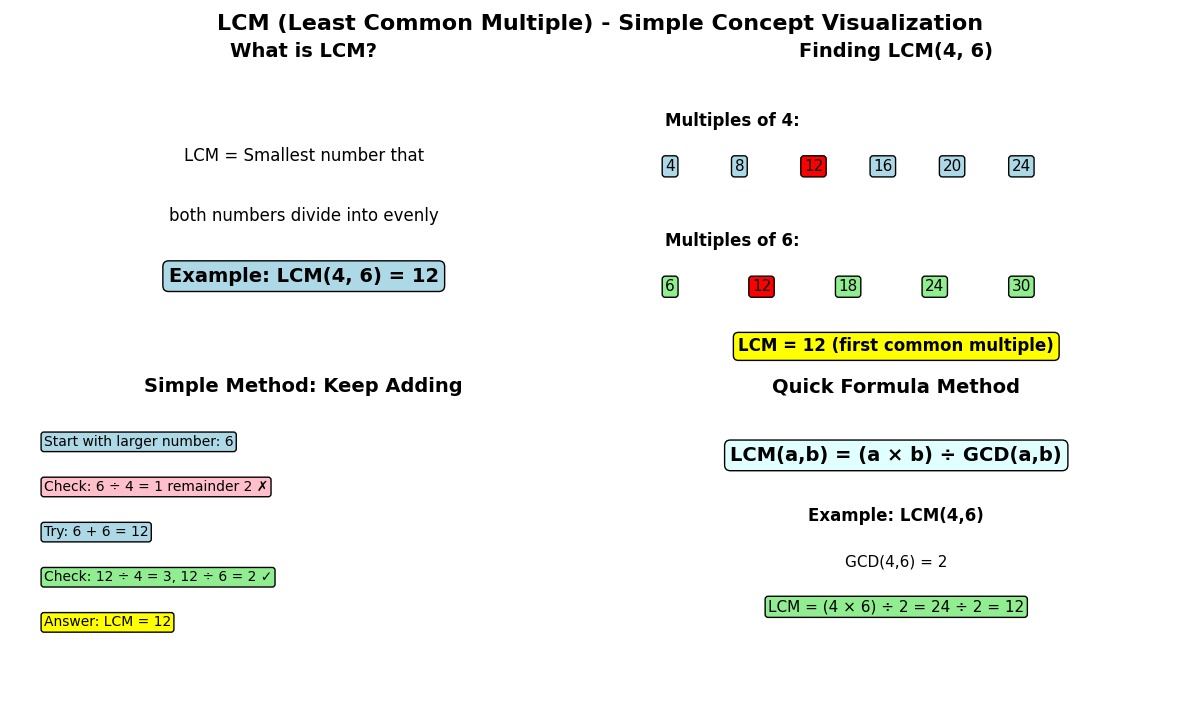
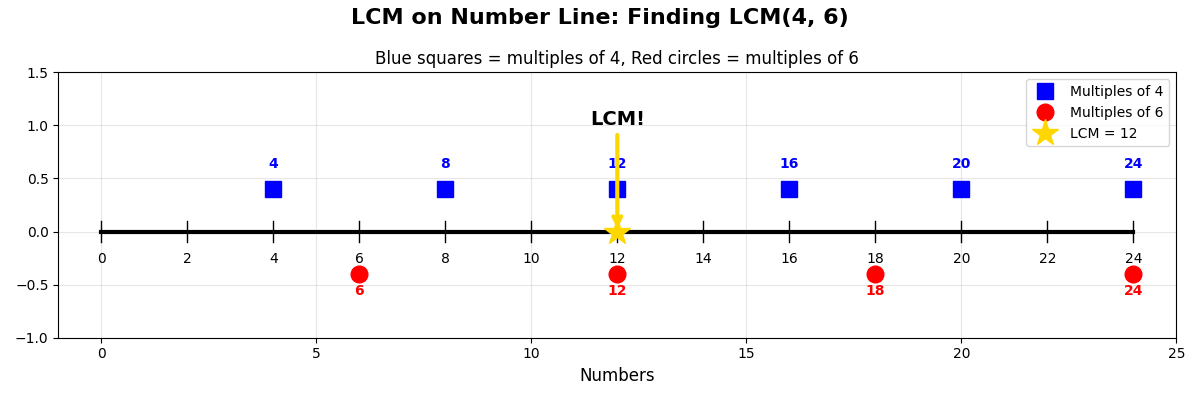
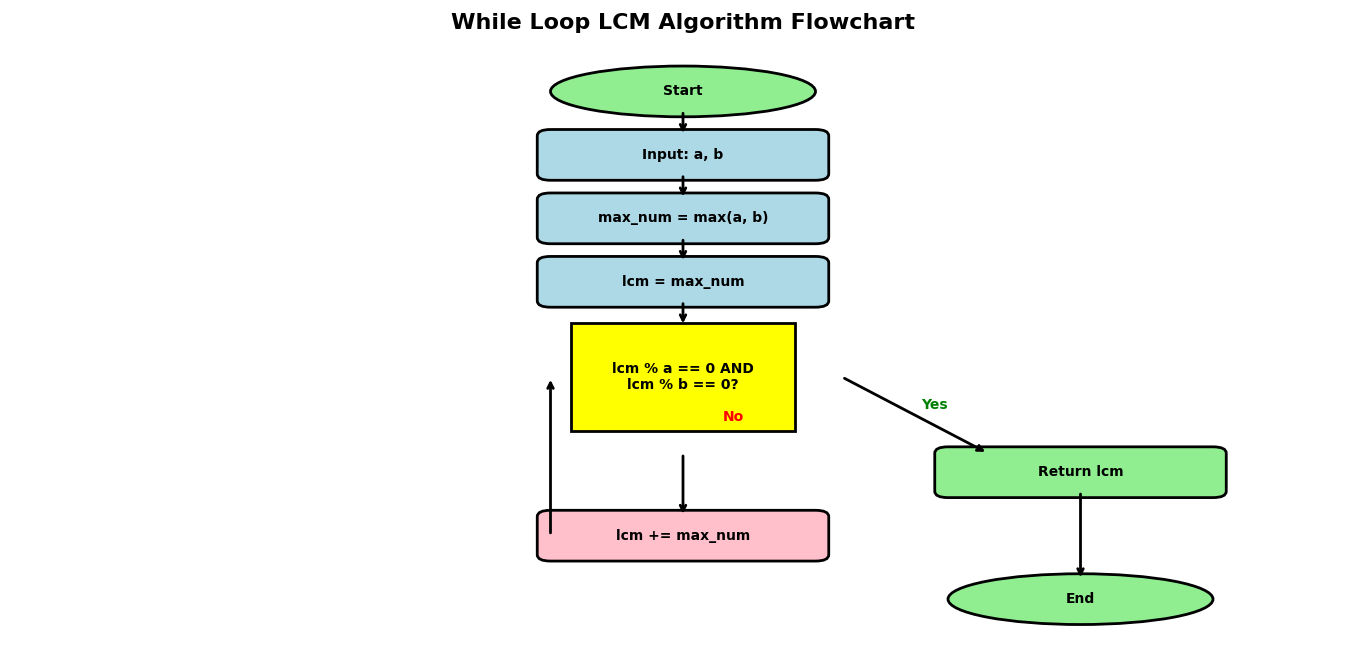
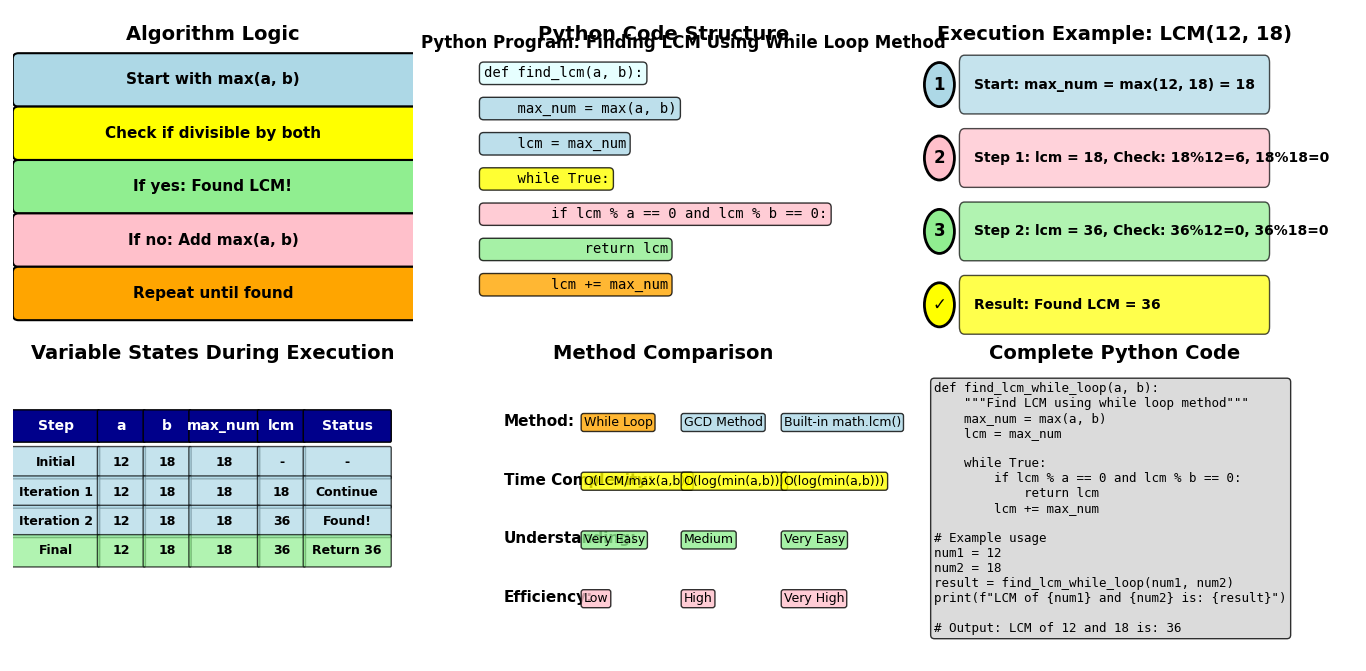
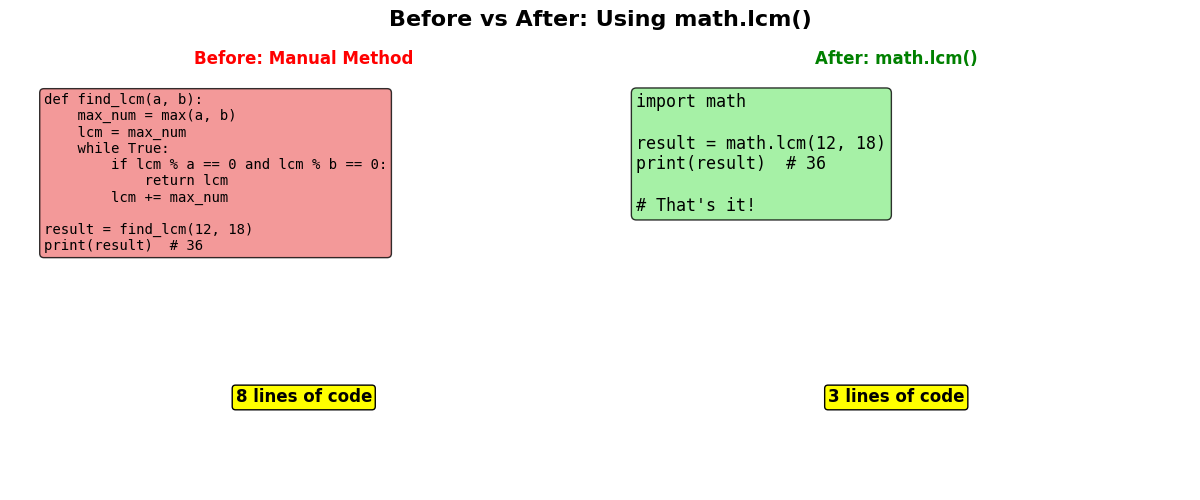

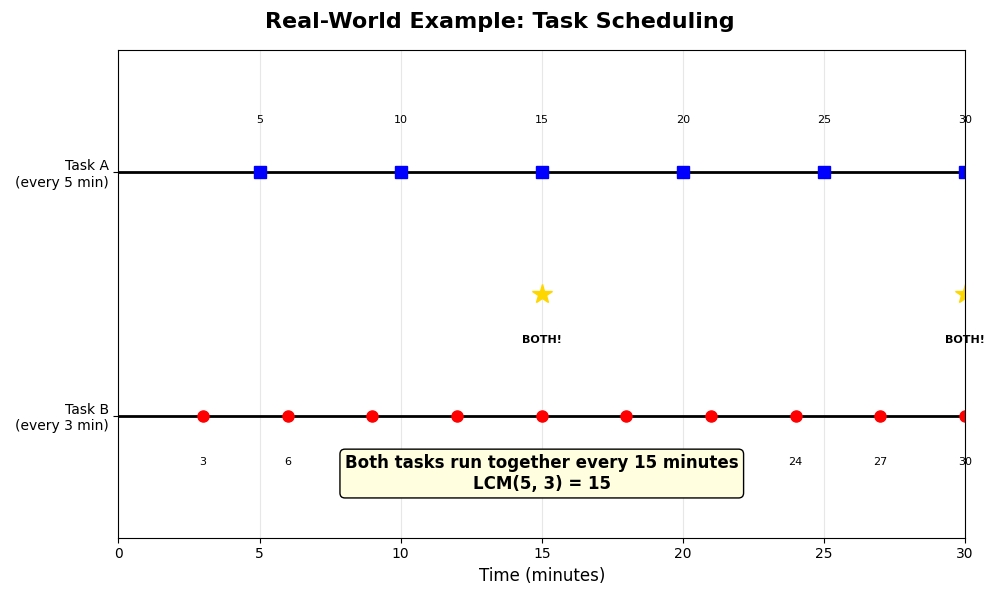
Leave a Reply